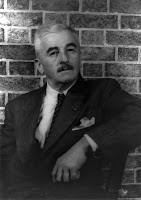By Karen Cioffi
It’s a content marketing fact: Blogging is one of the most effective authority building, persuasive, and money-making marketing strategies.
This being the case, it means you need to regularly post content to your blog. It may be multiple times a day, once a day, three-times a week, once a week, or once a month.
No matter what, you need to post to your blog on a regular basis. While I did put ‘once a month’ in the list, to blog effectively you should be blogging more than that. Conservatively speaking, once a week is the minimum.
But, suppose you’re motivated and want to post to your blog three or more times a week. What do you write about? What blog formats can you use? How do you keep it up?
The 5 Most Popular Blog Post Formats
To make life easier, there are certain blog post formats or templates that you can use. Kind of like a fill in the blanks template. These templates will give you quick to follow guidelines and make the writing process quicker and easier. So, let’s get to it. Here are the five most popular blog post formats:
1. The How-to Blog Post
The how-to post is about providing instructions or steps to explain to the reader how to do something and people love them. The post should answer your readers’ question or provide the solution to his problem. In other words, as with all your posts, it should be informative and helpful.
The writing process is standard: address the target audience and note the problem (the introduction); give the solution (this is the body of your post), give the conclusion.
Aside from your post title, the introduction is where you will turn your readers’ attention to interest. This section will motivate the reader to read on.
2. The List-based Blog Post
The list-based format is simply providing a list of things. It may be “10 Steps to a Lighter You”. It may be “5 of the Most Important Opt-in Words There Are.” You get the idea. Choice your topic, create your title, and list the advice or tips.
This post format is another one that people love. It’s easy to read and easy to follow. And, if you scan the articles you read, like me, it’s easy to pick out the information pertinent to you.
When writing in the list-based format strive for organization, sequencing, clarity, and use bullet points or numbered sequencing. Make sure that each step flows into the next logically. You always want to keep it simple for the reader.
Tip: Bullet points should be used when the information within each point has little text. Numbered paragraphs should be used when the points have more text. This article is an example of the need for numbered paragraphs.
3. The Content Curation Blog Post
Before we get into the format, let’s go over what content curation is. In simple terms, it’s using someone else’s content on your site by linking to it. You lead into the source content with your own perspective and ideas. Then add text leading the reader to the original source. You might use: ‘To read more about this, go to . . .’ Or, you might use: To read the original article, go to . . .
The idea is to link to the source article through a ‘more reading’ setup.
The benefit to you is saving time. You don’t have to write a full post, yet you get fresh content that will be helpful to your readers. The fresh content and fresh viewpoint helps increase your authority and helps build you into the ‘go to person’ for your niche.
You do though need to make sure the content is relevant to your site and it’d be a good idea if you leave a comment on the original article’s post.
Another benefit to this blog format is
trackbacking. Linking to the original source’s post will bring the attention of the source site to your site.
4. The Newsjacking Blog Post
The newsjacking blog post format is about making use of headline news within your industry/niche. This type of post is usually timely. It’s very useful if you want to be the one to bring breaking news to your audience.
Another way to use newsjacking is to create an in-depth analysis of the breaking news or simply give your perspective, after the fact. Just be careful not to plagiarize the content. You can reference the news content, but be sure to make the post content your own
You can also use newsjacking with the curation format.
5. The Slideshare or Video Blog Post
This format takes advantage of visual (and audio) content, in place of all text. This format helps break things up a bit. People love visuals. Adding videos or Slideshare presentations spices your blog up.
Along with adding variety, the visual posts allow you to actually demonstrate tricky topics. For example, when explaining how to use hyperlinks or deep links, it’s much easier for the reader to SEE how to do it, rather than read about it.
Just like the other formats, you do need an introduction explaining the problem and how you can help fix it. Then lead into the video or Slideshare presentation with something like: ‘Watch the video to see how it’s done.’ Or, use ‘Flip through the Slideshare I created to demonstrate just how to do it.’
Here’s an example of a Slideshare post:
Article Marketing – Optimize Your Blogger Blog Posts
Summing it All Up
Blogging is a must if you want to create and increase visibility, readership, leads, and sales. But, simply blogging isn’t enough, you need to know how to blog effectively. Using these five blogging formats will help you keep your blog posts fresh and keep your audience engaged and informed.
---------
Original article source: http://www.karencioffiwritingandmarketing.com/2014/03/blogging-5-most-popular-blog-post-and.html
Karen Cioffi is an Online Platform and Website Optimization
Instructor. You can check out her services at:
Build an Online Platform That Works
~~~~~
I hope you found this information interesting and helpful. Too advanced, not enough, just right? I’d really love to know, so please leave a comment – good or bad.
P.S. If you liked this article, PLEASE SHARE IT!
~~~~~
PPSS To get weekly visibility-generating writing and marketing tips, and more - right in your inbox: CLICK HERE!
~~~~~































